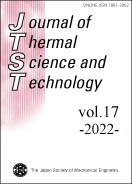17 巻, 1 号
選択された号の論文の11件中1~11を表示しています
- |<
- <
- 1
- >
- >|
Papers
-
2022 年 17 巻 1 号 p. 21-00353
発行日: 2022年
公開日: 2022/01/01
PDF形式でダウンロード (2212K) -
2022 年 17 巻 1 号 p. 21-00271
発行日: 2022年
公開日: 2022/01/01
PDF形式でダウンロード (2297K) -
2022 年 17 巻 1 号 p. 21-00296
発行日: 2022年
公開日: 2022/01/01
PDF形式でダウンロード (2292K) -
2022 年 17 巻 1 号 p. 21-00410
発行日: 2022年
公開日: 2022/01/20
PDF形式でダウンロード (5205K) -
2022 年 17 巻 1 号 p. 21-00346
発行日: 2022年
公開日: 2022/02/08
PDF形式でダウンロード (3032K) -
2022 年 17 巻 1 号 p. 21-00390
発行日: 2022年
公開日: 2022/02/19
PDF形式でダウンロード (1629K) -
2022 年 17 巻 1 号 p. 21-00323
発行日: 2022年
公開日: 2022/03/25
PDF形式でダウンロード (2425K) -
2022 年 17 巻 1 号 p. 22-00012
発行日: 2022年
公開日: 2022/04/07
PDF形式でダウンロード (19663K) -
2022 年 17 巻 1 号 p. 21-00413
発行日: 2022年
公開日: 2022/04/07
PDF形式でダウンロード (2372K) -
2022 年 17 巻 1 号 p. 22-00020
発行日: 2022年
公開日: 2022/04/15
PDF形式でダウンロード (1775K) -
2022 年 17 巻 1 号 p. 21-00421
発行日: 2022年
公開日: 2022/04/21
PDF形式でダウンロード (1682K)
- |<
- <
- 1
- >
- >|
